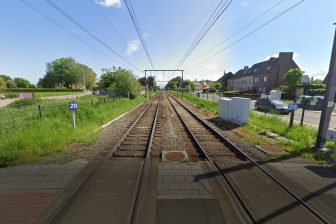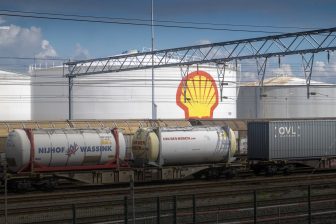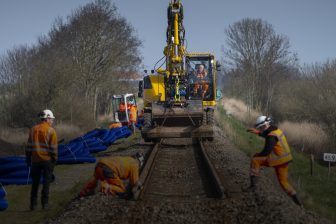Memorandum of association EEIG C Corridor signed
The Luxembourg railways and the Belgian and French rail infrastructure managers join forces to develop the Antwerp/Basel-Lyon freight corridor
Brussels, Belgium – The French infrastructure manager Réseau Ferré de France (RFF), the Belgian rail infrastructure manager Infrabel and the Luxembourg railways (CFL) held a constituent meeting on Friday, 16 March 2007 in Luxembourg of a European Economic Interest Grouping (EEIG). The aim is the development and speedy implementation of a unified European safety system (ERTMS) and to coordinate investment on the international Antwerp/Basel and Antwerp/Lyon corridor. The Swiss Railways (CFF) is also involved in this project.
The Antwerp/Basel – Lyon C Corridor
In the heart of the European railway network, several rail arteries are known as “corridors”. These corridors will be developed to improve the potential for freight traffic in Europe. This should come about by the speedy implementation of a single European safety system, the European Rail Traffic Management System (ERTMS) and by other major investments in infrastructure and rolling stock. There are in all six corridors crossing Europe, indicated by the letters A to F. The European Union supports the development of these corridors in collaboration with the member states involved and the infrastructure managers of the countries concerned. The EU is also supporting this venture financially with up to half possibly being paid by the EU.
One of these corridors, the Antwerp / Basel – Lyon C Corridor, which is in total about 1,840 km long, crosses Belgium, Luxembourg, France and Switzerland. The route of this corridor forms a strategic position for freight transport because it links one of Europe’s largest ports with major industrial centres.
There are five different signalling systems currently operating on corridor C. The introduction of the ERTMS standardized safety system will stimulate the growth of freight traffic and will contribute to the speed and reliability of train traffic. The implementation of the ERTMS system on the C corridor will take place over the period running from 2008 to 2018, in successive phases and per railway section.
Establishment of the European Economic Interest Grouping (EEIG)
In order to facilitate studies and work on improving interoperability on Corridor C and to make this corridor more competitive, it was decided that a basic legal structure was essential. The EEIG Corridor C organisation came into being after an agreement was signed on 9 June 2006 by the transport ministers of Belgium, France, Luxembourg and Switzerland on the implementation of ERTMS on this corridor.
The aim of ERTMS is to stimulate international traffic in combination with other investments in infrastructure and rolling stock and through operational measures. In March 2005, a protocole was signed by the various representatives from the railway sector and the European Commission and six corridors were identified as having priority for the implementation of ERTMS on ordinary railway lines. High-speed train links are covered by another implementation plan.
The memorandum of association of the “EEIG C Corridor” was signed on 16 March 2007 in Luxembourg by Luc Lallemand, CEO of Infrabel, Luc Vansteenkiste, director general of the Access to the Network department of Infrabel, Hubert du Mesnil, director general of RFF and Jeannot Waringo, director general of CFL in the presence of top officials of the European Commission including Karel Vinck, general coordinator of ERTMS. The aim of the EEIG is to develop specific measures by improving cooperation and the attractiveness of the offer on this line. In addition, the EEIG intends to draw up a detailed plan of action for the introduction of the ERTMS on the Antwerp-Basel C Corridor.
François Jaeger, director Network Management at CFL, will act as chairman for this new structure. The position of manager of the EEIG has been given to Luc Vansteenkiste, director general of the Access to the Network department of Infrabel. Due to his extensive experience in the railway sector, he will be responsible for the smooth operation of the operational and technical tasks of the EEIG.
The official setting up of the EEIG is an important step in the realisation and development of Corridor C. This organisation is also an excellent base for railway companies who intend to use this railway axis for freight traffic. The EEIG will be setting up its registered office in the Grand Duchy of Luxembourg.
Infrabel is a limited liability company of public law, responsible for the management, maintenance, renewal and development of the Belgian railway network. The company is also in charge of the allocation of the licences and slots to all Belgian and foreign operators. The specific structure of the Infrabel shareholders guarantees a total independence. Infrabel was established on 1 January 2005, at the splitting up of the Belgian Railways, and is part of the SNCB Group. The company now employs some 14,000 people and achieves a turnover of about 1,1 billion euro (2006).
U las zojuist één van de gratis premium artikelen
Onbeperkt lezen? Profiteer nu van de introductieaanbieding voor € 10,- per maand.
Bent u al abonnee?



